- Joined
- Dec 14, 2021
- Messages
- 296
- Points
- 168

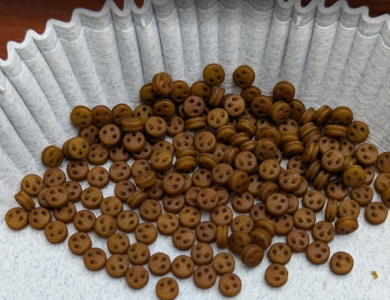 Hot on the heels of the faux wood blocks, the deadeyes are now well into production. There will be at least two colours, Teak and Ebony, and possibly a light colour as well. It's a time-consuming process to make all the different sizes and, as I'm going to be spending a few days away in the hills this weekend, I'm not expecting to be ready for listing until the tail end of next week at earliest. But meanwhile, I wanted to show something which I think might surprise some of you.
Hot on the heels of the faux wood blocks, the deadeyes are now well into production. There will be at least two colours, Teak and Ebony, and possibly a light colour as well. It's a time-consuming process to make all the different sizes and, as I'm going to be spending a few days away in the hills this weekend, I'm not expecting to be ready for listing until the tail end of next week at earliest. But meanwhile, I wanted to show something which I think might surprise some of you.I'm sure many of you are aware that printed resin has a tendency towards brittleness and has relatively little strength compared to many other materials. Consequently, for deadeye clamps the usual course of action is to either make these from wire or buy aftermarket photo-etch parts. But hold on! Resins have come on a long way in the last few years, and as PE can really push up the cost, I thought I'd see if resin really is a non-starter for this purpose.
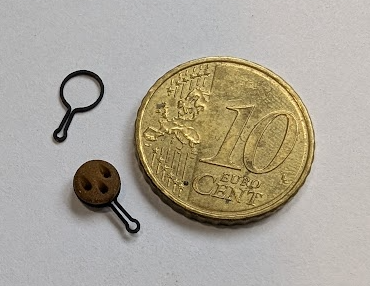 This is a 5mm deadeye with a 0.4mm, square cross-section, resin printed clamp. The clamp is flexible enough to slip over the deadeye quite easily and it sits in a corresponding groove within the deadeye. For 6mm and 7mm deadeyes I'm able to increase the thickness to 0.5mm.
This is a 5mm deadeye with a 0.4mm, square cross-section, resin printed clamp. The clamp is flexible enough to slip over the deadeye quite easily and it sits in a corresponding groove within the deadeye. For 6mm and 7mm deadeyes I'm able to increase the thickness to 0.5mm.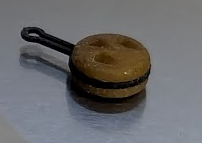
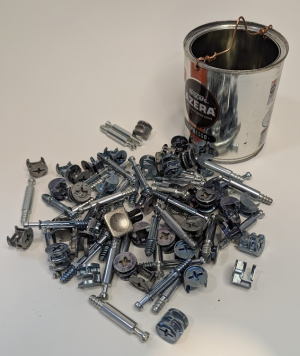 With such a thin cross-section, I assumed the clamp would break as soon as I put any tension on it. Initially, I did some rudimentary testing by threading it with 'rope' and pulling until it broke. I was surprised at how much tension it took before it snapped and thought it was worth being a little more scientific. So I made up a little test rig and dug out a box of redundant, 20 year-old Ikea fittings that were bound to come in useful one day. Looks like today was that day
With such a thin cross-section, I assumed the clamp would break as soon as I put any tension on it. Initially, I did some rudimentary testing by threading it with 'rope' and pulling until it broke. I was surprised at how much tension it took before it snapped and thought it was worth being a little more scientific. So I made up a little test rig and dug out a box of redundant, 20 year-old Ikea fittings that were bound to come in useful one day. Looks like today was that day 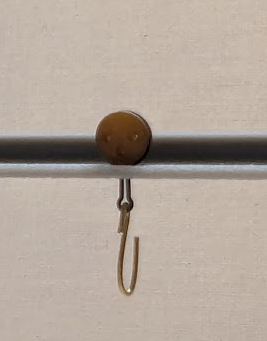
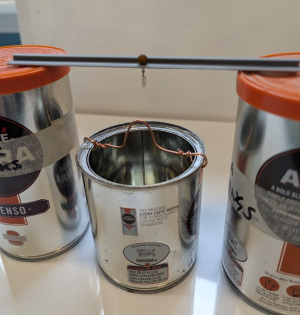 Next, a quick'n'dirty mock-up of a deadeye channel, suspended between a couple of coffee tins. The channel is printed on an FDM machine in PLA. It's an 'L' section with quite a hefty rib at the back to resist bending.
Next, a quick'n'dirty mock-up of a deadeye channel, suspended between a couple of coffee tins. The channel is printed on an FDM machine in PLA. It's an 'L' section with quite a hefty rib at the back to resist bending.The deadeye is simply resting on the channel with the clamp running through a small square-shaped hole, with a little brass hook attached for hanging weight. It's not glued in place, nor is the clamp glued to the deadeye.
Now to add weight! I won't do this bit by bit, that would be daft, but all that metal in the third photo.... well here it is again...
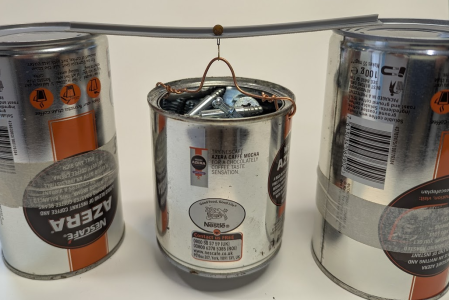
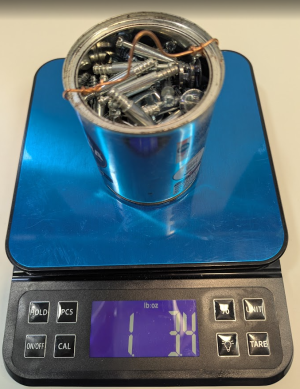
Surprised? Me too. I really can't see me needing to apply nearly 1 1/4 lbs of force on an unglued deadeye. If it's that dire I probably need to be checking the true-ness of the mast! And look at the distortion of the channel! If you look carefully, you'll see that the clamp has opened up a bit under this amount of force but under a more reasonable amount of tension it holds it shape and this 'no-glue' solution means the deadeye can be freely rotated to find it's natural line to the shroud.
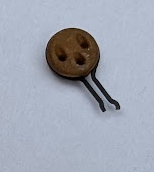
Most of the time the clamp snaps somewhere in the eyelet, and being resin, there is no warning - when it goes, it goes, it doesn't stretch or deform first.
There's no secret formula behind this: I've tested several resins and basic mixtures i.e. elegoo abs on it's own, the same mixed with some syratech fast, nylon-like resin; and get the same level of force with more or less any resin that is designed to have a bit more flex and strength: the clamps always take about 1 1/4 lbs before breaking. Plain standard resin breaks a fair bit earlier. I ought to add that I'm applying the force in line with the plane of the clamp and know it would break more easily if I started pulling sideways etc.
Based on these tests I'll almost certainly be including resin clamps with the deadeye sets. It's a lot easier and cheaper than having PE clamps made up, which I think most people would welcome. Chains? No, I think these are too ship-specific.
BW
Kevin




